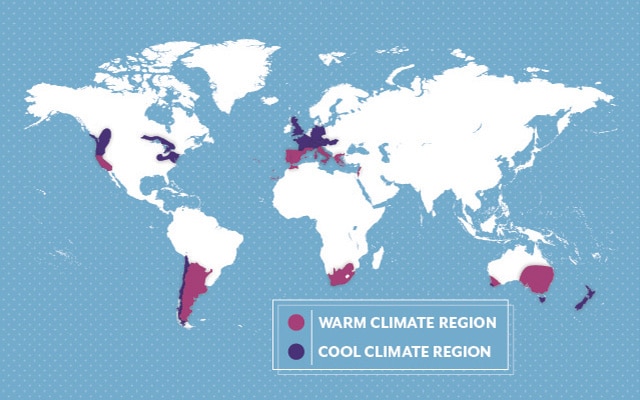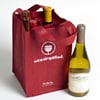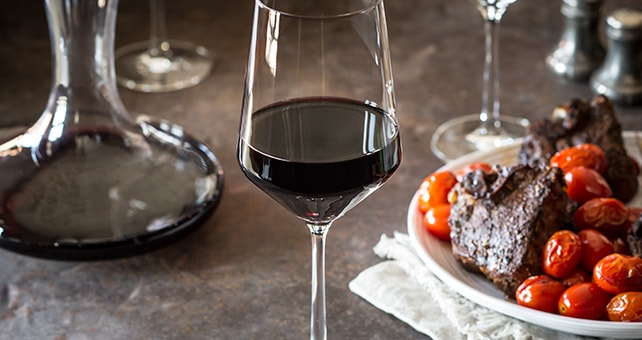On the vine, tiny cabernet sauvignon grapes hang in clusters. But one sip of this bold red wine shows that it lives up to its French translation: sauvignon = savage. The deeply-colored, high-tannin, and high-acid wine is a structural powerhouse with exceptional aging potential. Even with these full-bodied traits, cabernet sauvignon is also remarkably adaptable and can be enjoyed every day—including International Cabernet Sauvignon Day, typically August 30.
Cab—the nickname it's known by—is grown almost everywhere vines grow, from the traditional regions of Bordeaux, France, and Napa Valley, California, to Hungary, Italy, Chile, Australia, Canada, and even Texas. Widely popular, cabs range from under $10 per bottle to thousands of dollars.
Styles can vary based on each region's climate, radiating olive tapenade and green pepper notes when it's from a cooler region or not as ripe, and blackberry bramble and black currant flavors on the riper, warmer-climate side of things.

Perhaps the most important tip for enjoying cabernet sauvignon is that it can be sipped year-round, with a grilled burger on a midsummer night or alongside a thick stew in the winter. Cabernet is one of the most food-friendly wines out there, but works particularly well with dishes that stand up to the boldness in the glass.
One tip to getting the most out of your cabernet sauvignon: Decant it. Any pitcher or carafe will do the trick, allowing young cabernets to breathe and alcohol aromas to vaporize into the air.
Here are a few recipes to serve as inspiration to help you get the most out of your bottles.
- Braised Red Cabbage with Apples and Bacon: The addition of smoky bacon tempers the sour tang of this perfect side.
- Beef Tenderloin Steaks with Blackberry-Cabernet Reduction: Wine accents the fruit-forward flavor in this rich sauce accompaniment to steak.
- Lamb Chops: A spice rub and a smattering of grape tomatoes in this lamb dish offer a subtle mix of textures and flavors for the palate.
- Red Wine Braised Short Ribs: A slow cab braise adds melt-in-your-mouth tenderness to classic short ribs.

 You are about to leave publix.com and enter the Instacart site that they operate and control. Publix’s delivery and curbside pickup item prices are higher than item prices in physical store locations. Prices are based on data collected in store and are subject to delays and errors. Fees, tips & taxes may apply. Subject to terms & availability. Publix Liquors orders cannot be combined with grocery delivery. Drink Responsibly. Be 21. For prescription delivery, log in to your pharmacy account by using the Publix Pharmacy app or visiting
You are about to leave publix.com and enter the Instacart site that they operate and control. Publix’s delivery and curbside pickup item prices are higher than item prices in physical store locations. Prices are based on data collected in store and are subject to delays and errors. Fees, tips & taxes may apply. Subject to terms & availability. Publix Liquors orders cannot be combined with grocery delivery. Drink Responsibly. Be 21. For prescription delivery, log in to your pharmacy account by using the Publix Pharmacy app or visiting 

